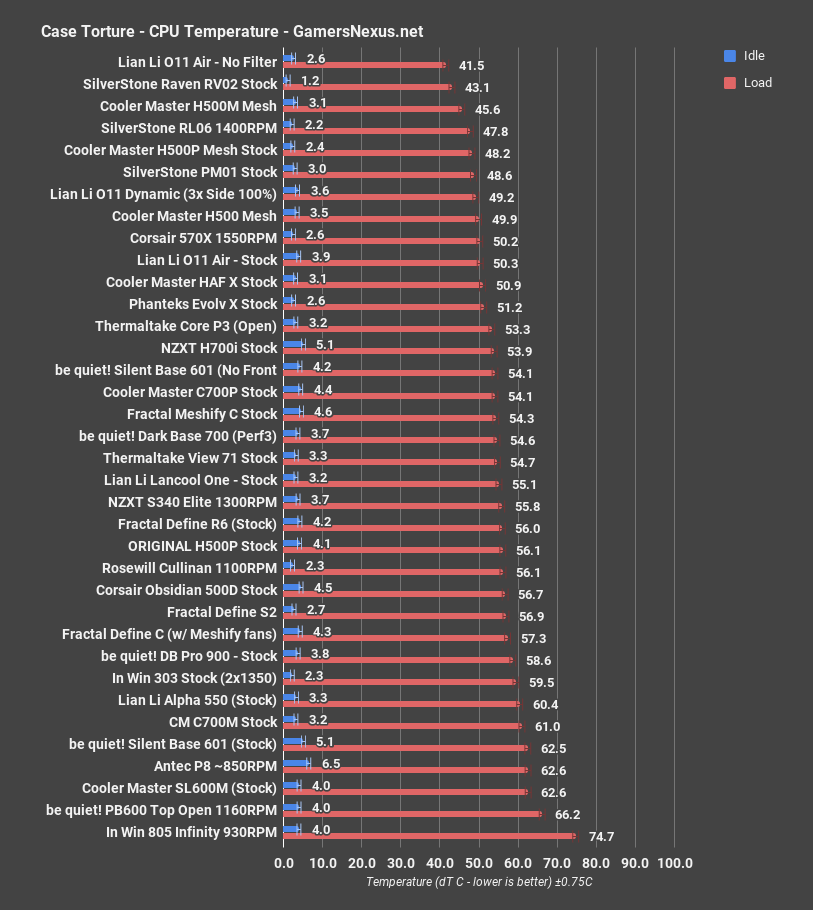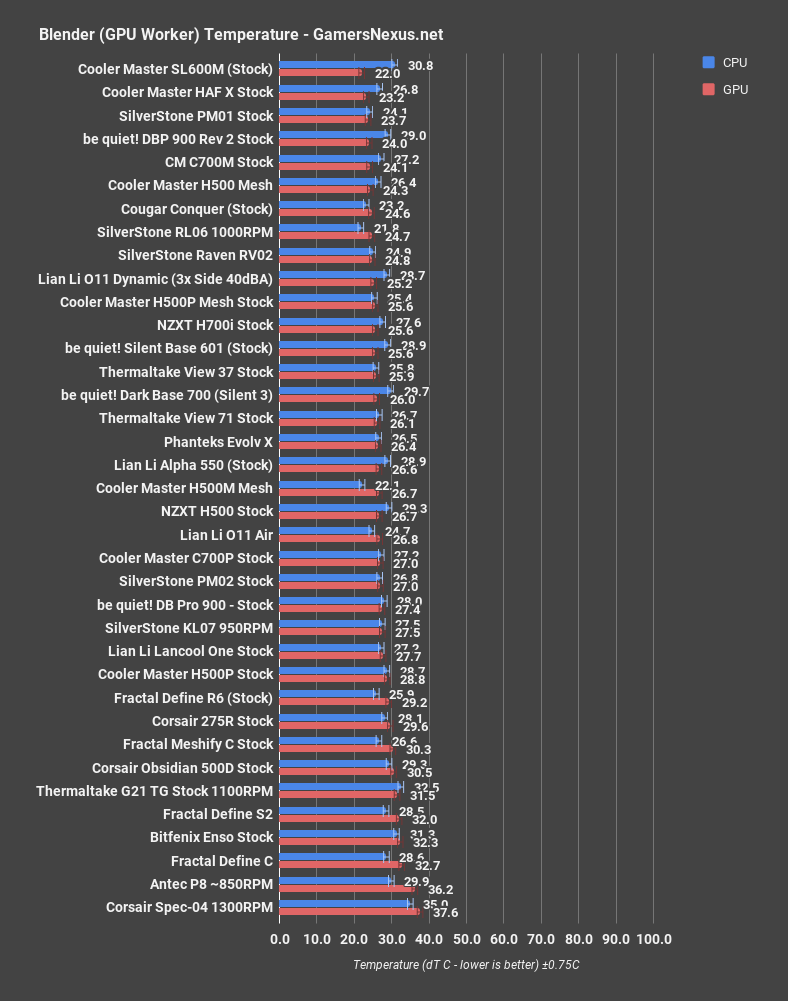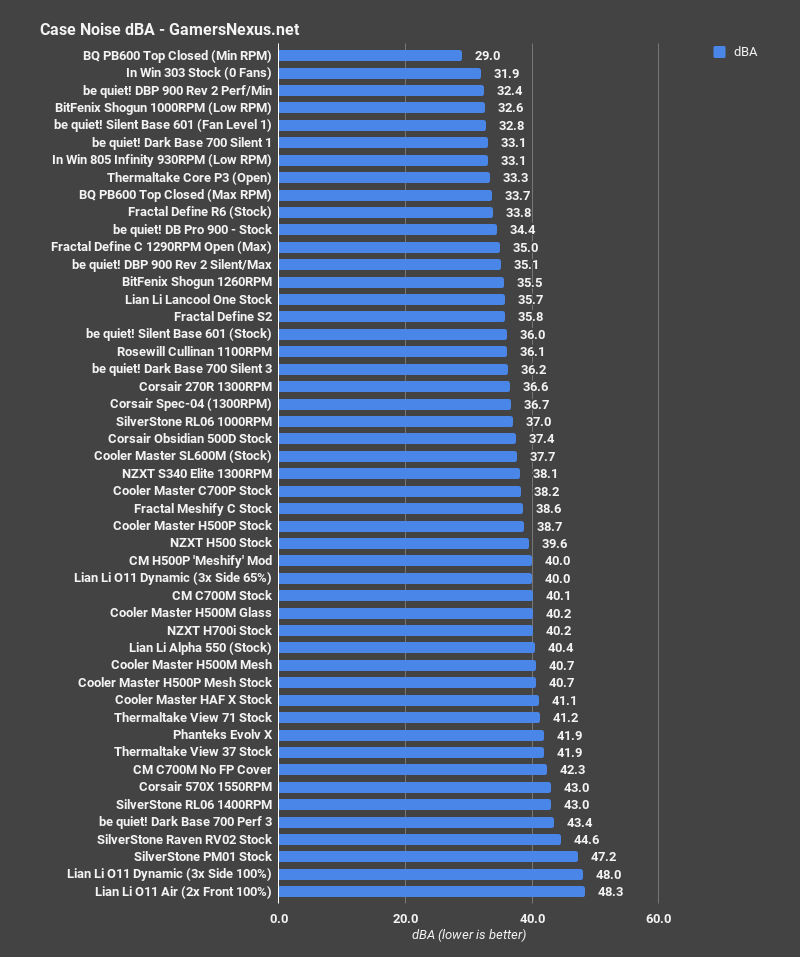Be quiet!’s cases are divided into three groups: Dark Base cases are the high-end flagships, Pure Base are (relatively) budget, and Silent Base is the range of cases in between. We’ve most recently covered the Pure Base 600 and the Dark Base Pro 900 at either end of their price spectrum, and now we’re reviewing the Silent Base 601 in the middle.
The be quiet! Silent Base 601 is priced at around $130, depending on when you check retailers, and competes most directly in price with the NZXT H700, Cooler Master H500P Mesh, and Fractal Define R6.
be quiet! Silent Base 601 Specs
Model | Silent Base 601 | Orange |
PSU form factor | ATX PS/2 |
Motherboard compatibility | E-ATX, ATX, M-ATX, Mini-ITX |
Case size excl. stands (L x W x H), (mm) | 532 x 240 x 481 |
Installation of motherboards with backplate | ✓ |
Case size incl. stands (L x W x H), (mm) | 532 x 240 x 514 |
Dimensions side panel window (L x W), (mm) | 440 x 498 |
Color option | Orange |
Weight (kg) | 10.49 |
USB 2.0 | 1 |
USB 3.0 | 2 |
USB 3.1 Gen 2 Type C | - |
HD Audio I/O | 1 |
Expansion slots | 7+2 |
Fan mounting locations | Front, Rear, Top, PSU Shroud |
be quiet! Silent Base 601 PC Build
The 601 comes with orange, black, or silver trim, and is sold with either one steel/one glass panel or two identical steel panels. We prefer the non-windowed variety, which is what we received for review: the major selling point of be quiet!’s cases is silence, achieved in part with a heavy layer of noise damping foam on the case panels, and if that accomplishes anything at all then replacing half of it with a glass window won’t help. The foam is 1cm thick, it’s shaped into tiny noise baffles, and it fully covers the inner surfaces of the front, top, and sides of the case.
Visually the 601 is similar to the rest of be quiet!’s cases, with bevelled corners and angular strips of trim, but they don’t appear to be reusing old parts. Given how elaborate their cases usually are, with invert-able layouts and removable HDD bays and rubber grommets crammed in everywhere, it’s impressive how low be quiet! keeps costs on the Silent and Pure Base lines. Obviously some parts (like the HDD bays) are shared, and they only have a few case models in production at any given time, but it’s bizarre that buying a Raijintek Ophion and adding two Pure Wings 2 140mm fans to it (if they’d fit, which they wouldn’t) would cost as much as the 601 does with those fans already installed.
The side panels use a push-button ejection system similar to the one we praised on the H700i, but it’s implemented on both side panels, even in the windowed version of the case, a notable improvement over the thumbscrews used in the Dark Base Pro 900. Pressing the buttons to release the panels allows them to hinge out just enough so that they can be pulled upwards. That keeps the panels from flopping out onto the floor, but the natural instinct is to try to pull the panels out rather than up. It’s still kind of a novelty, but it serves more of a purpose for be quiet! than it would for other manufacturers because of the noise damping foam. With normal side panels, it can be difficult to get the cables and foam all squeezed together enough to slide them into place.
There’s no magnetic front door like the one on the Dark Base 900, but the metal cover over the front filter does easily slide up and out. The bottom filter ejects from the front of the case rather than the back, which is always a welcome feature. Other small quality-of-life features that deserve praise are the removable PSU frame and a top fan/radiator mount that slides out from the side. This mount is particularly nice, and it’s possible to slide it out partially and install a radiator without completely taking it out of the case.
The fan controller is three-speed and it can handle up to three fans. Like the Dark Base 700, the 601 crams the controller switch into a former USB port in the front panel. We tend not to use fan controllers if we have a choice, so we prefer this simple and unobtrusive controller to the fancier one in the Dark Base Pro 900.
It’s difficult for case fans to move air through tight spaces and right angles, and we criticise cases that carelessly ignore this. With the Silent Base 601, though, this is an intentional part of the design--it trades ease of cooling for silence. Results are included in the thermal section later in this review, but it doesn’t take a genius to figure out that the 601’s front panel is more restrictive than something like a Meshify C.
Cable management space is limited; it’s about 3cm at best, but the foam and grommets and various bits of metal hardware cut into that. The 1cm thick foam is soft, so it’s technically possible to squeeze in more in, but that risks leaving permanent dents in the specially-shaped foam. We’d recommend removing the HDD cage and using the extra room inside the PSU shroud for cables, and using be quiet!’s free-floating HDD bays instead. Only one is included with the 601, but it’s the same kind that the other be quiet! cases use and extras are available for $10. Up to five of these can fit in the case.
It’s strange to have a PSU shroud inside of a case with no side window. PSU shrouds have become so ubiquitous that they seem like a functional feature of a case rather than a cosmetic one, which is all they are. The 601 has a shroud because it has an optional side window, but if you use the opaque panel like we did, it’s mostly a waste. There is at least a fan mount on the top of the shroud, so it could be used to pull more cool air in, and the surface of the shroud under the GPU cooler is ventilated to keep it from being a detriment.
Case Testing Methodology
GN Case Testing Bench (Sponsored by CableMod)
| Component | Courtesy Of | |
| Video Card | MSI GTX 1080 Gaming X (OC Mode) | MSI |
| CPU | Intel i7-6700K @ 4.4GHz | GamersNexus |
| CPU Cooler | MSI Core Frozr L | MSI |
| Motherboard | MSI Z170A Gaming M7 | MSI |
| Memory | Corsair Vengeance LED 32GB 3200MHz | Corsair |
| SSD | Samsung 850 EVO 120GB | Samsung |
| PSU | Corsair RM650x | Corsair |
| Cables | CableMod Pro Mesh Cables | CableMod |
| Case | This is what we're testing! | - |
The video card is configured to run at 55% fan speed at all times.
Prior to load testing, we collect idle temperature results for ten minutes to determine the unloaded cooling performance of a case's fans and air channels. Thermal benchmarking is conducted for 1400 seconds (23 minutes), a period we've determined sufficient for achieving equilibrium. The over-time data is aggregated and will occasionally be compiled into charts, if interesting or relevant. The equilibrium performance is averaged to create the below charts.
Load testing is conducted using Prime95 LFFTs and Kombustor “FurMark” stress testing simultaneously. Testing is completely automated using in-house scripting, and executes with perfect accuracy on every run.
We recently validated our test methodology using a thermal chamber, finding our approach to be nearly perfectly accurate. Learn more here.
Thermals & Noise
Stock configuration for the 601 is two Pure Wings 2 140mm fans, one in rear exhaust and one in front intake just above the PSU shroud, both plugged into the motherboard and set to max speed. Additional tests were done with no front panel, orienting the GPU vertically, and using the fan controller at minimum speed. The vertical GPU mount is clearly only intended to be used with the windowed version of the case, and there’s less clearance in our version thanks to the foam, so performance is worse than it would be. Removing the front panel here means taking the metal cover off the front but leaving the filter and the rest of the panel in place.
be quiet! Silent Base 601 CPU Torture
We’re starting with just a bunch of be quiet! cases, then we’ll move to comparative testing between competitors. For the stock Silent Base 601, average CPU temperature during torture testing was 62.5 degrees Celsius over ambient. Using the fan controller to lower the speed to level 1 raised thermals to 72.9 degrees over ambient, which is obviously a poor use case. These results illustrate that you really should only be using these low-speed settings for idle or browsing-type work, not for gaming or heavy loads. This is illustrated by all the other be quiet! devices with low fan speeds, too, including the Dark Base 700. For the Silent Base 601, removing the front panel lowered temperature to 54.1 degrees over ambient. The front panel obstructs airflow heavily, but it’s also clear that the fan is still able to effectively cool at max speed, even with the obstruction. Mounting the GPU vertically raised the temperature a couple of degrees from baseline, but that test has more relevance to the GPU.
The baseline 62.5-degree temperature is one of the warmest on the chart, around the Antec P8 in performance. For reference, we previously described the Antec P8 as having the cooling capacity of a toaster – so this isn’t a good part of the chart to occupy. The Dark Base Pro 900’s delta T result was about four degrees lower, but it is a larger case with more breathing room and more fans. Even 54.1 degrees Celsius without the front panel cover isn’t incredibly low, just about on-par with the stock Meshify C. The single intake fan is aimed much more directly at the GPU than the CPU cooler, so that’s where a lot of our air is going – we’ll have to look at GPU performance results for that. Really competitive cooling in this case would require two or three more fans, but that would also generate more noise, beginning to negate the silence-focus of the case. We need to look at some more numbers, including noise numbers, before we reach anything conclusive. Be quiet! can’t be dinged too hard for being warm when the entire goal is silence, not cooling.
Silent Base 601 GPU Thermals
Moving on to the GPU with just be quiet! cases, GPU thermals averaged 52.8 degrees over ambient in the SB601’s torture test. This was lowered a few degrees to 49.3 degrees Celsius dT by removing the front panel, raised to 57.7 degrees by lowering the case fan speed, and raised again to 62.2 degrees dT by mounting it vertically. Mounting a GPU vertically flush with a side panel will always worsen cooling, and there’s absolutely no reason to do it in a case with no window. With the window, reserve it for open loop solutions.
Comparatively, 52.8 degrees dT is a bit below the center of the chart, actually below the other be quiet! cases we’ve tested and closer to the Corsair 270R in performance. It’s not impressive, but we still have noise to look forward to – that’ll be at the end, and is the major opportunity for redemption of performance.
3DMark Firestrike Thermals
Firestrike Extreme stress testing raised GPU dT to 55.3C, a more mediocre rank relatively than in the torture test, but still not bad. That’s on the same level as the Silverstone KL07 and PM02, two intensely forgettable cases. It’s also better than the Dark Base Pro 900, but not nearly as good as the Rev. 2 of that case. The Silent Base 601’s CPU thermals in Firestrike are remarkably high, up there with the recent SL600M testing, where the CPU is largely compartmentalized and isolated by a wall of GPU below it.
Blender Thermals
CPU dT in the Blender CPU render test was 41.5 degrees over ambient, one of the warmest temperatures on the chart. Llike the torture test result, this is equivalent to the Antec P8 and not distant from the Bitfenix Enso. Despite a silence focus, high-end machines with air coolers would benefit from an additional fan or from a brute-forced liquid cooling approach.
GPU dT in the Blender GPU render test was 25.6C, another decent GPU result on the same level as the H500P Mesh and stock H700i. Be quiet! gets some redemption here, ranking in the upper half of performance in the Blender GPU test. As a reminder, this happens because that front fan is largely centered on the GPU, benefiting it tremendously.
be quiet! Silent Base 601 Noise & Acoustics
Noise suppression is the main attraction here, and the Silent Base 601 delivers. We measured it at 36dBA with the fans at maximum speed, which is where most of those thermal results were recorded. That puts the Silent Base 601 as around the S2, Lancool One, and Define C in acoustic performance. Noise measured at 32.8dBA with the fan speed minimized via the controller. The max noise level is comparable to the Lancool One or the Dark Base 700 at the level 3 silent setting, while the minimum is closer to the Dark Base Pro 900’s minimum noise level. Note again that the minimum setting is really only suitable for low-load work.
Conclusion
Be quiet!’s case is well-built, a pleasure to build in, and they don’t cool very well. GPU cooling is serviceable here thanks to the arrangement of fans, but good CPU cooling with a traditional air cooler would require some reconfiguration or an additional fan. Again, though, the focus is on silence, which is always at odds with cooling, and it succeeds in that aspect. This case is well-priced for what it is, but it shouldn’t be expected to deal with sustained heat.
The be quiet! Silent Base 601 competes primarily against the Fractal Define R6 in terms of market positioning. It's a direct match for price and intended use case. The R6 is fine -- just like the 601 is fine. Neither compels us particularly hard in one direction or the other. If you want something that's more airflow-driven, the H500P Mesh or NZXT H700 are good bets.
Host, Test Lead: Steve Burke
Editorial, Testing: Patrick Lathan
Video: Keegan Gallick, Andrew Coleman, Josh Svoboda








